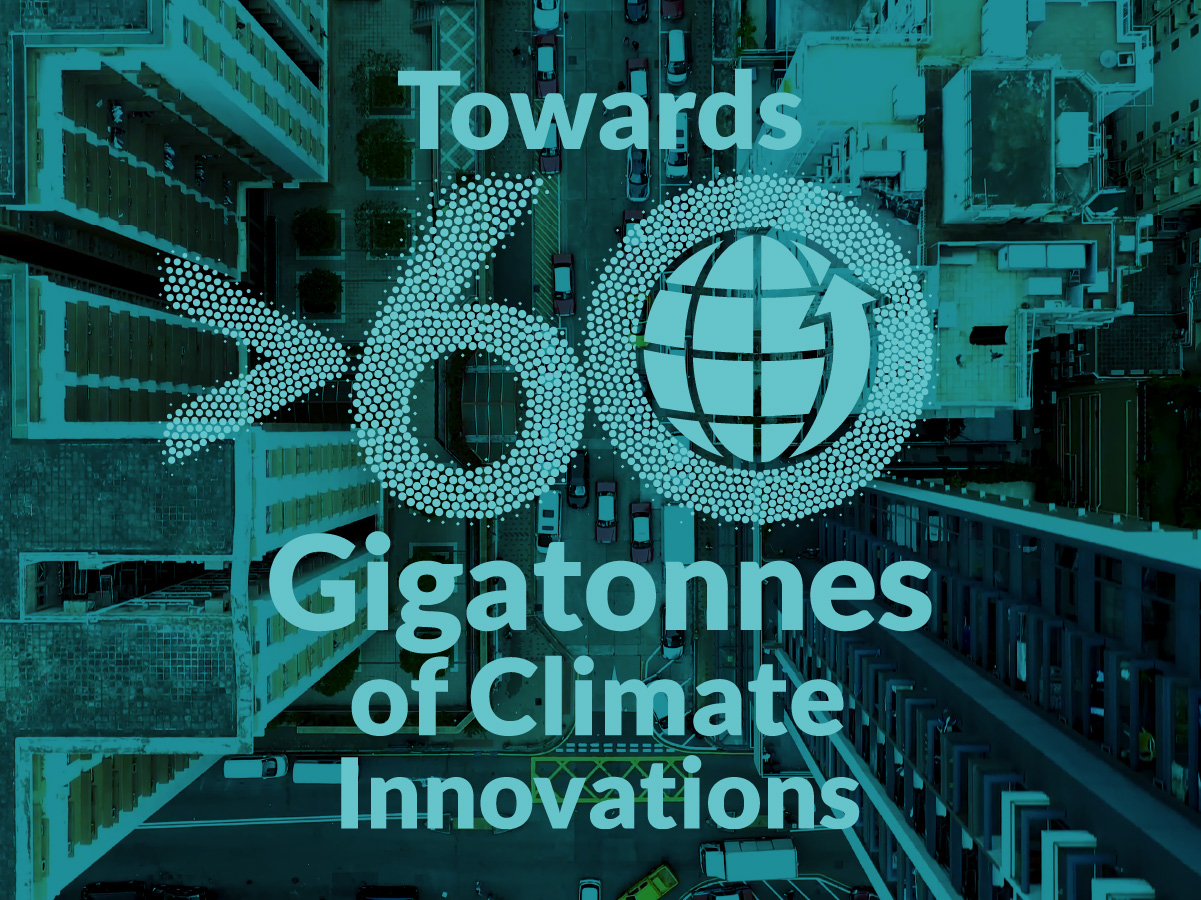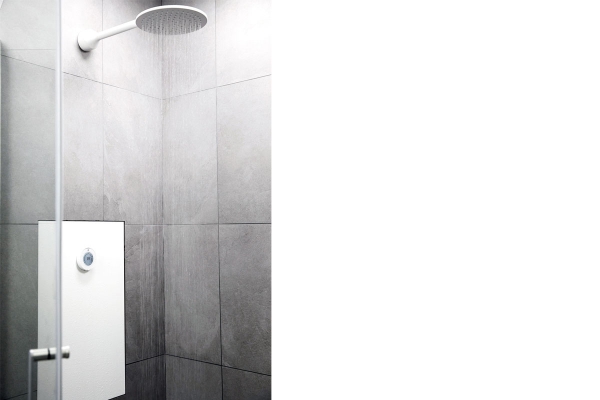Nominated innovations
1000 innovative clean energy solutions and > 150 framework enablers with the potential to deliver more than twelve gigatonnes of avoided emissions by 2030
These assessments are based on a basic avoided emission assessment. The overall concept of avoided emissions is that a solution (product or service) enables the same function to be performed with significantly less GHG emissions. The method of measuring avoided emissions, is to compare a baseline scenario without the enabling solution, with a scenario using the enabling solution; whereby the baseline represents the ‘business as usual’ (BAU) scenario.
These assessments are based on the framework document: The Avoided Emissions Framework (AEF) from September 2020

We create bike frames made of bamboo
Changboo wrote: My nature my bike our bicycle frames are mostly made of natural resources. Changboo bicycle frames are manufactured from bamboo and hemp fiber both of which have a positive impact on the carbon footprint. Of the product. Riding a bicycle is environmentally sustainable, with our bamboo bike it's even more!. Leave the car at home and take the bike!.. Source: EIT Climate KIC's ClimateLaunchPad
Switzerland

Changboo
We create bike frames made of bamboo
Changboo wrote: My nature my bike our bicycle frames are mostly made of natural resources. Changboo bicycle frames are manufactured from bamboo and hemp fiber both of which have a positive impact on the carbon footprint. Of the product. Riding a bicycle is environmentally sustainable, with our bamboo bike it's even more!. Leave the car at home and take the bike!.. Source: EIT Climate KIC's ClimateLaunchPad
Currently unavailable

We convert plastic waste
Mega Gas wrote: People all over the world use fuels everyday to survive and move. Traditional forms of fuels comprise biomass and fossil fuels. These fuels forms have been over strained beyond limits, exploitation of biomass fuels have degraded eco system. This leads to global warming and hence introducing new clean fuels into use to replace dependence on traditional fuels with the hope of reducing global warming and improving health of majority of population who have no access to fuels. The use of biomass fuels leads to indoor pollution that kills over four million annually according to world health organization. Plastic waste is also a big menace world wide, even now we have the island of plastic in the pacific ocean... Source: EIT Climate KIC's ClimateLaunchPad
Kenya

Mega Gas
We convert plastic waste
Mega Gas wrote: People all over the world use fuels everyday to survive and move. Traditional forms of fuels comprise biomass and fossil fuels. These fuels forms have been over strained beyond limits, exploitation of biomass fuels have degraded eco system. This leads to global warming and hence introducing new clean fuels into use to replace dependence on traditional fuels with the hope of reducing global warming and improving health of majority of population who have no access to fuels. The use of biomass fuels leads to indoor pollution that kills over four million annually according to world health organization. Plastic waste is also a big menace world wide, even now we have the island of plastic in the pacific ocean... Source: EIT Climate KIC's ClimateLaunchPad
Currently unavailable

We build bikes made from recycled plastic
Urban R-PET bike by Kinethic wrote: At kinethic we're going to use trash plastic bottles to improve urban mobility by recycling them and making bicycles. There will be different models in order to fit needs such as commuting, taking children to school, carrying goods or doing therapy with the disabled... Source: EIT Climate KIC's ClimateLaunchPad
Spain

Urban R-PET bike by Kinethic
We build bikes made from recycled plastic
Urban R-PET bike by Kinethic wrote: At kinethic we're going to use trash plastic bottles to improve urban mobility by recycling them and making bicycles. There will be different models in order to fit needs such as commuting, taking children to school, carrying goods or doing therapy with the disabled... Source: EIT Climate KIC's ClimateLaunchPad
Currently unavailable

Water treatment resource recovery in fertiliser production
CCm Technologies have developed a technology to process ammonia and organic waste streams found in the wastewater industry, utilising surplus heat and the flue gases from existing combined heat and power (CHP) engines. If successful, the project will save the electricity that is currently used to drive the conventional waste treatment processes and will produce a feedstock for high grade fertiliser, a potentially significant revenue stream. This will also displace further energy used in conventional fertiliser production plants.
United Kingdom

CCm Technologies Limited
Water treatment resource recovery in fertiliser production
CCm Technologies have developed a technology to process ammonia and organic waste streams found in the wastewater industry, utilising surplus heat and the flue gases from existing combined heat and power (CHP) engines. If successful, the project will save the electricity that is currently used to drive the conventional waste treatment processes and will produce a feedstock for high grade fertiliser, a potentially significant revenue stream. This will also displace further energy used in conventional fertiliser production plants.
Currently unavailable

Water recirculating shower
Orbital Systems developed a real-time water purification technology, implemented in its recirculating shower which results in domestic water savings. In the shower, the water from the drain is collected, purified and looped back to be re-used, enabling water and energy savings. According to the company, their solution results in up to 90% of the water and 80% of the heating energy being saved, while at the same time delivering cleaner water compared to conventional showers. The technology is based on what is used today by NASA for space missions.
Sweden
≈10

Orbital Systems AB
Water recirculating shower
Orbital Systems developed a real-time water purification technology, implemented in its recirculating shower which results in domestic water savings. In the shower, the water from the drain is collected, purified and looped back to be re-used, enabling water and energy savings. According to the company, their solution results in up to 90% of the water and 80% of the heating energy being saved, while at the same time delivering cleaner water compared to conventional showers. The technology is based on what is used today by NASA for space missions.
≈10Mt CO2e/year

Water purification for developing countries
SolarSack wrote: Solarsack can contain 4 liters of water, and with 4 hours in the sun, the water will be pasteurized, and ready to drink. With about 60 uses, a single solarsack can provide more than 240 liters of water. Solarsack is made to reduce shipping cost, and with a production price 1/5 the cost of a bucket of coal, solarsack can be sold at a profit, and still be affordable to the user. Solarsack is developed based on studies and prototyping in east africa, and the both the purification process and the user interaction is tested with the actual users in africa. Calculation including shipping and distribution still gives solarsack a 1/20 the co2 emission compared to boiling with charcoal, while totally eliminating the use of wood... Source: EIT Climate KIC's ClimateLaunchPad
Denmark

SolarSack
Water purification for developing countries
SolarSack wrote: Solarsack can contain 4 liters of water, and with 4 hours in the sun, the water will be pasteurized, and ready to drink. With about 60 uses, a single solarsack can provide more than 240 liters of water. Solarsack is made to reduce shipping cost, and with a production price 1/5 the cost of a bucket of coal, solarsack can be sold at a profit, and still be affordable to the user. Solarsack is developed based on studies and prototyping in east africa, and the both the purification process and the user interaction is tested with the actual users in africa. Calculation including shipping and distribution still gives solarsack a 1/20 the co2 emission compared to boiling with charcoal, while totally eliminating the use of wood... Source: EIT Climate KIC's ClimateLaunchPad
Currently unavailable

Water pollution localization and analysis
EMUT wrote: We develop floating platforms to monitor and analyse water quality of rivers.. Source: EIT Climate KIC's ClimateLaunchPad
Germany

EMUT
Water pollution localization and analysis
EMUT wrote: We develop floating platforms to monitor and analyse water quality of rivers.. Source: EIT Climate KIC's ClimateLaunchPad
Currently unavailable

Water from air without energy
Sponsh wrote: The united nations expect that within 30 years, half the world’s population will experience water stress. However, nature has learned over millions of years how to survive in dry, coastal areas: they retrieve their water from air. So we thought: why don’t we do that. . Inspired by nature, we developed technology that produces water from air, using a smart, temperature-sensitive textile. During the night, when temperature are low, the textile absorbs large amounts of water from air. During the day, as temperatures rise, the fibres in the textile contract and release all the water. That way, driven by the natural temperature cycles of day and night, this textile can produce abundant water for irrigation and drinking water. ... Source: EIT Climate KIC's ClimateLaunchPad
Netherlands

Sponsh
Water from air without energy
Sponsh wrote: The united nations expect that within 30 years, half the world’s population will experience water stress. However, nature has learned over millions of years how to survive in dry, coastal areas: they retrieve their water from air. So we thought: why don’t we do that. . Inspired by nature, we developed technology that produces water from air, using a smart, temperature-sensitive textile. During the night, when temperature are low, the textile absorbs large amounts of water from air. During the day, as temperatures rise, the fibres in the textile contract and release all the water. That way, driven by the natural temperature cycles of day and night, this textile can produce abundant water for irrigation and drinking water. ... Source: EIT Climate KIC's ClimateLaunchPad
Currently unavailable

Water Chakra
Water Chakra wrote: Water and fertilizers are crucial components to the socio-economic development of the nation and sanitation is the basic need. In the manufacturing process of fertilizers, phosphorous and potassium are non-renewable critical resources that are 80 to 100% imported by india. One resource that interlinks the water-nutrients nexus with the sanitation is human urine. Urine contains about 98% water and remaining are nutrients (n, p, k). About 22% of the global phosphorus demand can be achieved through the recovery of phosphorus from human waste. It’s time to ‘reinvent the toilet’... Source: EIT Climate KIC's ClimateLaunchPad
India

Water Chakra
Water Chakra
Water Chakra wrote: Water and fertilizers are crucial components to the socio-economic development of the nation and sanitation is the basic need. In the manufacturing process of fertilizers, phosphorous and potassium are non-renewable critical resources that are 80 to 100% imported by india. One resource that interlinks the water-nutrients nexus with the sanitation is human urine. Urine contains about 98% water and remaining are nutrients (n, p, k). About 22% of the global phosphorus demand can be achieved through the recovery of phosphorus from human waste. It’s time to ‘reinvent the toilet’... Source: EIT Climate KIC's ClimateLaunchPad
Currently unavailable

Wastopedia
Wastopedia wrote: We aim to create a rentable win-win business, where people, companies and the planet can profit from efficient waste sorting and recycling. No more having to decipher confusing packaging labels on how to dispose of your yogurt cups. We will tell you what to do and where to put them with only a click... Source: EIT Climate KIC's ClimateLaunchPad
Portugal

Wastopedia
Wastopedia
Wastopedia wrote: We aim to create a rentable win-win business, where people, companies and the planet can profit from efficient waste sorting and recycling. No more having to decipher confusing packaging labels on how to dispose of your yogurt cups. We will tell you what to do and where to put them with only a click... Source: EIT Climate KIC's ClimateLaunchPad
Currently unavailable